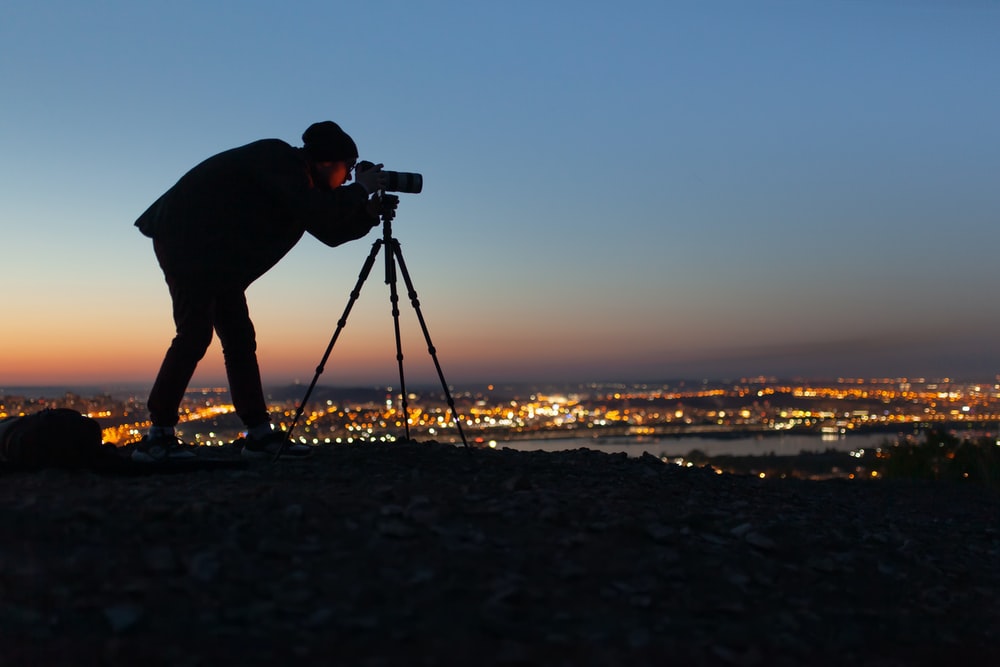We live in a visual age when everyone can be a photographer. But to stand out from the crowd and produce photos that will take your hobby to the next level, you need a digital single-lens reflex camera or DSLR camera stand for short. It offers incomparable picture quality and a decisive increase in flexibility and creativity. So let’s find out what is a DSLR camera.
Camera stands are useful especially when you want to take a clear photo without blur. You might think that only professional photographers use camera stands, but that's not the case. The camera stand is very convenient to do real estate photography for beginner photographers.
What is a DSLR camera?
The abbreviation DSLR tripods for "digital single-lens reflex camera. In contrast to other digital cameras, the digital SLR camera works with a built-in mirror and has both a built-in display and a viewfinder. In this way, the user can use one of the two viewing options when setting the photo.
DSLR cameras usually offer significantly better image quality than conventional digital compact cameras. At the same time, they shine with their manually adjustable programs and a large number of automatic program functions.
This camera is primarily characterized by two things: its special functionality, which is due to the internal structure (but more on that later) and the possibility of changing the lens. The latter in particular is particularly valued by friends of the SLR camera, as the camera can thus be used universally and can be used for different types of recordings.
Digital SLR cameras in particular are more because the prices are now relatively low and the image quality is very good even with entry-level models.
In contrast to DSLR cameras, there are also so-called DSLM cameras, which are also called system cameras. With this type of camera, the internal structure is more comparable to that of digital cameras in the form of compact cameras, but the lens can also be changed here.

Disadvantages of DSLR cameras
The disadvantage is the large weight not just of the camera, but also of the individual lenses. In addition to the 18 - 55 mm standard lens, it is also advisable to purchase a model with a larger focal length, which can be up to 200 mm, for example. By using a teleconverter, the achievable focal length is even doubled, so that a maximum focal length of 400 mm can be achieved with the 200 mm lens.
Further considerations about the DSLR camera
If you prefer to opt for a more compact and usually cheaper model, you should be interested in a bridge camera. This represents a bridging technology between the compact and the digital reflex camera and offers numerous programs and a significantly lower weight and space requirement.
Another further development of the DSLR camera is the system camera. This works with a different exposure technology, is much more compact, and is also equipped with interchangeable lenses. However, the acquisition costs here, at least for high-quality camera models, are significantly higher than for a digital SLR camera.
Choosing the best DSLR camera
When you search online, you will find numerous tests, reviews, and presentations of DSLR cameras from every price and performance class. Most of the test reports are not based on the price of the camera but are primarily intended to show the price/performance ratio in the respective camera category. The DSLR camera stand tests come from real users of the camera because this is the only way to get a realistic insight into the actual performance of the respective model. But why is a camera test important at all?
Quite simply: the image quality of SLR cameras is not primarily determined by technical data and functions, but also by properties of the hardware and the camera itself that cannot be measured directly. For example, error-free processing and the high quality of the individual parts installed are important factors for later image quality. DSLR camera tests reliably show you which models are perfect for you and which camera you can expect which results.
How does a DSLR camera work?
The way cameras work in general differs from type to type. But how does a single-lens reflex camera actually work? We explain it to you clearly and in detail.
The heart of the DSLR camera is housed in the body of the camera, namely the sensor. This image sensor picks up light and converts the incident light into electrical voltage. The sensor itself has numerous individual fields, the so-called pixels. The more pixels the sensor has, the smaller they are.
The voltage from the image sensor is passed on directly to the so-called image processor in a DSLR camera. This calculation kernel converts the voltage into digital signals, which are then put together into a finished image file. The speed of this processor determines, among other things, how quickly the DSLR camera works. But how does the light get to the sensor in the first place and how does the user of the DSLR camera see which content will appear in the image later?
This has to do with the so-called mirror. The light enters through the lens and is then bundled into a narrow beam that is projected onto the DSLR camera sensor. However, there is a mirror construction between the lens and the sensor that guides the light through the DSLR camera housing and leads directly to the optical viewfinder. The DSLR camera tripod user looks in there and sees what the image will look like later. If the trigger is then pressed, the mirror jumps up (so-called mirror reflex) and the light can fall on the sensor. This is how DSLR technology works.

Conclusion
The individual camera types each have their advantages and disadvantages, but in practice DSLR cameras, i.e. single-lens reflex cameras, are used across all shifts: regardless of whether you are a beginner, advanced or professional user, a good single-lens reflex camera is irreplaceable.
FAQ
How different is DSLR from other camera types?
While analog SLR cameras capture the motifs on an inserted 35mm film, the resulting image can be viewed immediately on the display and post-processed on the home PC. If the recording is unsuccessful, it is simply deleted. Unfortunately, in most cases, it is not possible to continue using the lenses of analog SLR cameras for a DSLR model from the same manufacturer. However, this may be possible by using an additional teleconverter.